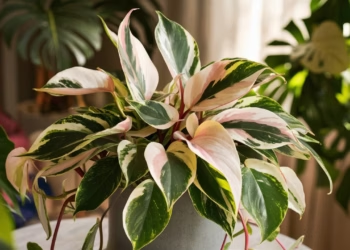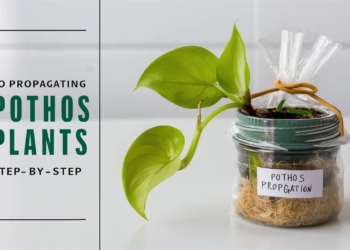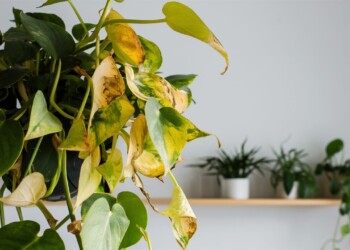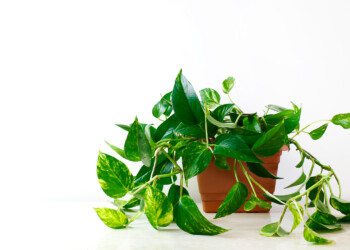Are you ready to transform your living space into a lush haven? Look no further than the care monstera plant: how to care for a cheese plant! Monstera Deliciosa, commonly known as the Swiss Cheese Plant, is the ultimate jungle vibe provider for your home. In this guide, we’ll unravel the mysteries of cultivating and pampering this green giant. Brace yourself for an adventure in plant care that goes beyond the ordinary!
Table Of Contents
Getting to Know the Green Beast: Monstera Deliciosa
The Monstera Deliciosa, is not your average houseplant. With its iconic split leaves resembling Swiss cheese, this tropical beauty hails from the rainforests of Central America. Here’s a quick overview to help you understand this green beast:
- Origin: Central American rainforests
- Nickname: Swiss Cheese Plant
- Special Feature: Iconic split leaves
- Personality: Thrives in indirect sunlight, a drama queen for attention!
Common Names and Botanical Information
Known as the split-leaf philodendron, Swiss cheese plant, windowleaf, and ceriman, Monstera deliciosa belongs to the Araceae family. This climbing vine can reach a mature size of 3 – 15 feet tall and 3 – 8 feet wide, making it a striking addition to any space.

Types of Monstera Plants
With nearly 50 species in the Monstera genus, variations in foliage and growth habits abound. Some common types include:
- Monstera albo (Monstera deliciosa ‘Albo Borsigiana’)
- Monstera obliqua
- Monstera acacoyaguensis
- Monstera acuminata
- Monstera adansonii

Creating the Perfect Habitat for Your Monstera: monstera care for beginners
Let There Be Light!
Just like any diva, your Monstera Deliciosa loves the spotlight but not too much of it! Place your plant in bright, indirect light, away from harsh sunlight, ideally between 65 and 75 degrees Fahrenheit. While it can tolerate shade, excessive direct light in warmer months may lead to foliage burn. Outdoor growth is also possible in the full shade of deep woodlands and the semi-shade of light forests. Think dappled sunlight filtering through the rainforest canopy – that’s the sweet spot for your green companion.
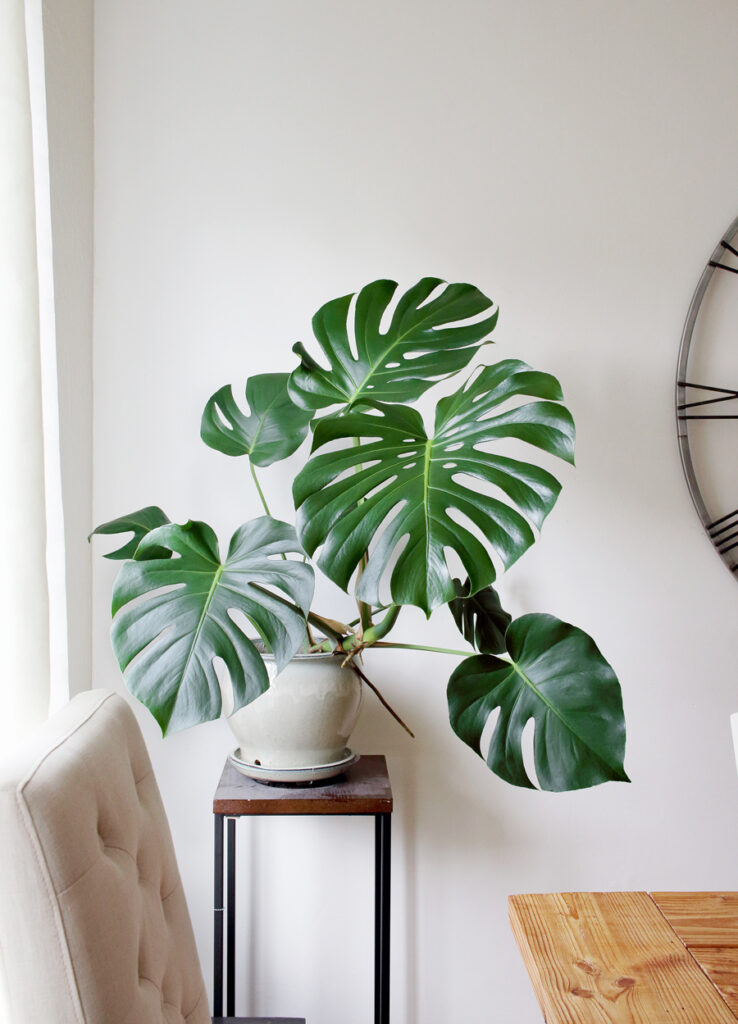
Soil Conditions
When cultivated in containers, Monstera deliciosa prefers peat-based potting media. Outdoors, it adapts well to light sandy, medium loamy, and heavy clay soils with either acidic or neutral pH. A well-drained, moderately moist soil environment is essential for optimal growth. Intricate aerial roots, supporting stems with leaves that can grow up to 3 feet long, are a distinctive feature of this plant.
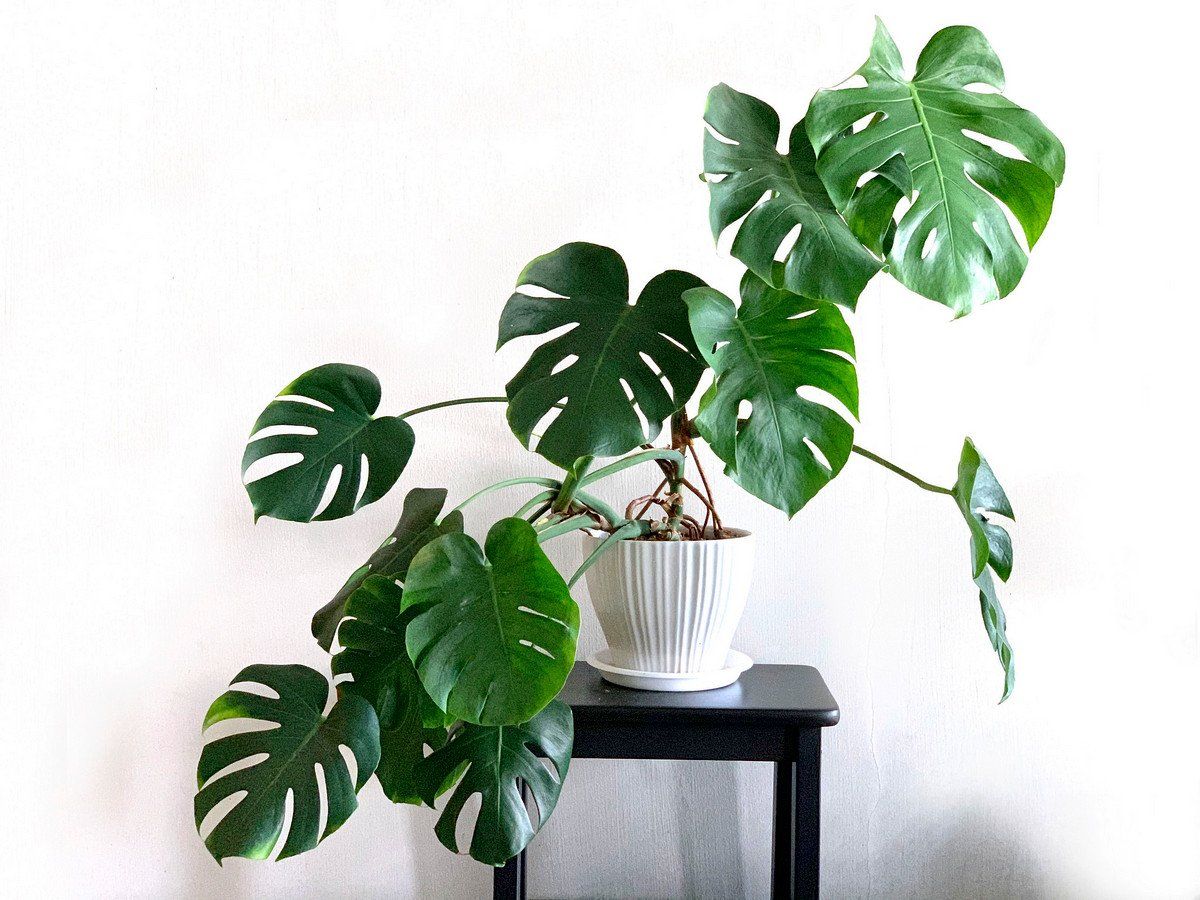
Temperature and Humidity Considerations
Monstera deliciosa thrives in temperatures ranging from 65 to 85 degrees Fahrenheit, with a tolerance down to 50 F and up to 90 F. High humidity, around 60%, is preferred. Daily misting or the use of a humidifier helps maintain moist leaves.
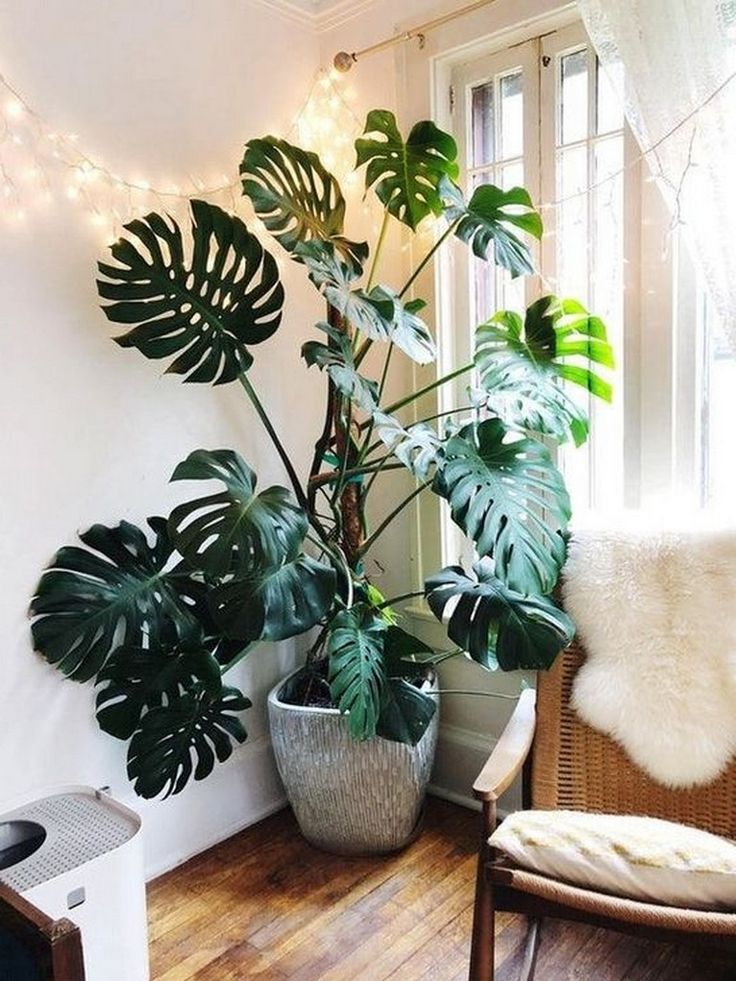
Monstera Watering: Quenching the Thirst
The care monstera plant: how to care for a cheese plant also involves mastering the art of hydration. Water your Monstera when the top inch of the soil feels dry. But remember, they hate soggy feet, so don’t drown them!
- Watering Schedule: Regular waterings are crucial during the growing season, typically every one to two weeks. Water until excess drains through drainage holes, ensuring the soil slightly dries out between waterings. In fall and winter, reduce watering frequency. To boost indoor humidity, mist the foliage regularly using demineralized water or rainwater.
- Warning Signs: Yellowing leaves? Back off on the watering!
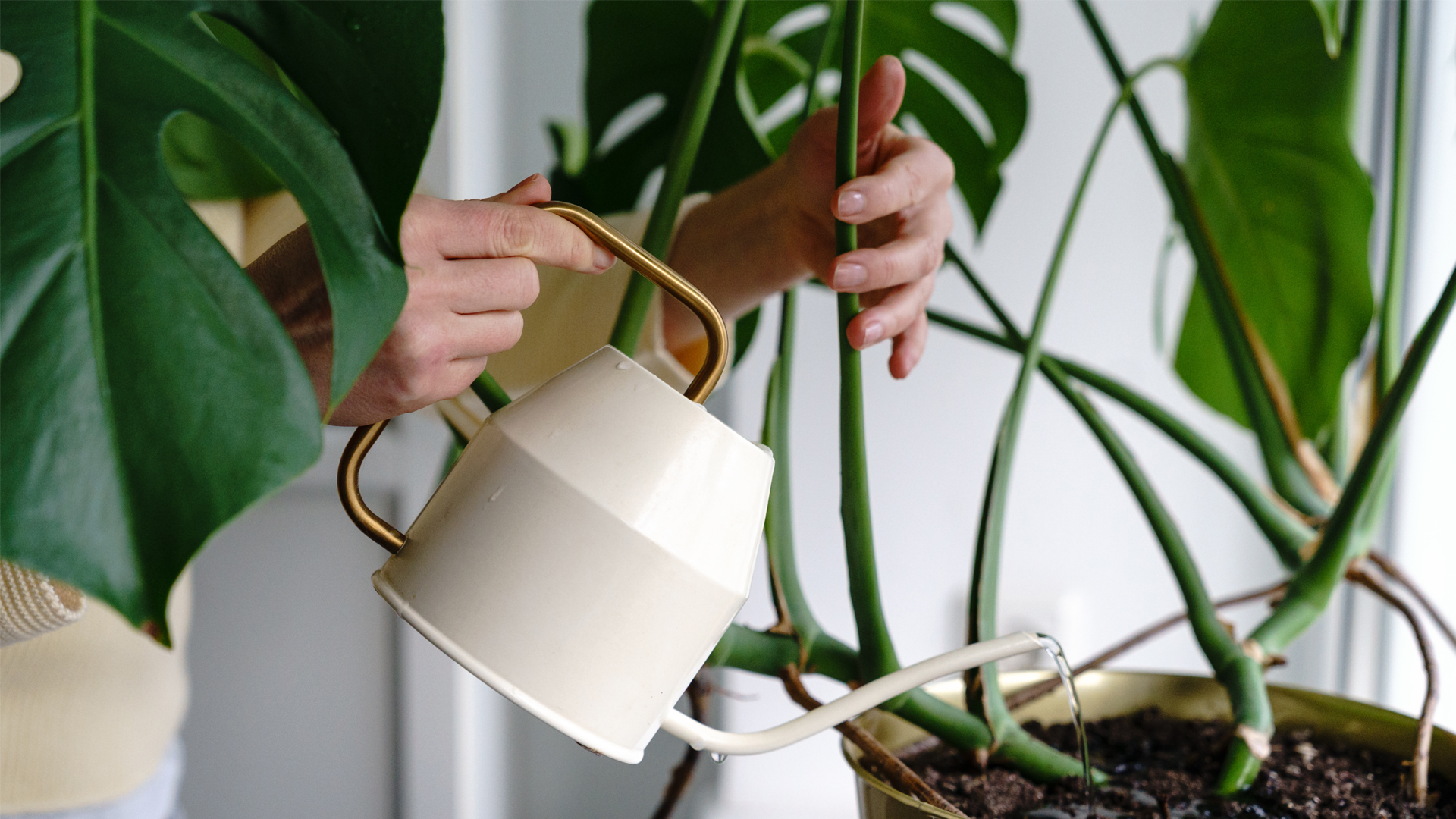
Feeding the Beast
Your Monstera is not just a pretty face; it needs its share of nutrients. During the growing season (spring and summer), feed it with a balanced liquid 20-20-20 fertilizer should be applied every few weeks. Dilute 1/2 teaspoon of the fertilizer in a gallon of water, using the mixture in place of regular watering. Proper disposal of excess diluted fertilizer is crucial, as the plant takes what it needs, rendering the surplus ineffective. However, ease up in the colder months – even divas need a break

Monstera Care 101: Troubleshooting Common Issues
Yellow Leaves Drama
Is your Monstera putting on a yellow leaf fashion show? Fear not, it’s not the end of the world! Here are some reasons and solutions for this dramatic display:
- Overwatering: Ease up on the watering schedule!
- Underwatering: Give your plant a good drink, and it’ll bounce back.
- Poor Lighting: Find a better spot with filtered sunlight.
- Suggest dry soil; remove affected leaves and adjust watering.
Leggy Monstera Melodrama
If your Monstera starts getting leggy, it’s craving more light. Imagine being stuck in the shadows – your plant feels the same! Move it to a brighter spot, and watch it regain its lush, bushy appearance.
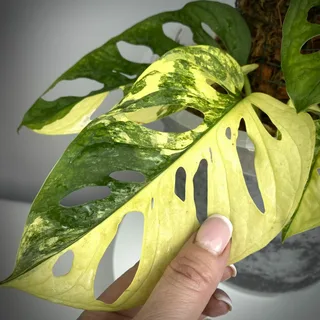
Congratulations, plant parent! You’ve now mastered the art of care monstera plant: how to care for a cheese plant. With the right balance of light, water, and love, your Monstera Deliciosa will reward you with lush foliage and a touch of tropical paradise. So, go ahead, embrace the jungle vibes, and let the Swiss Cheese Plant transform your living space into a green haven! Happy planting!
FAQs
How often do you water a cheese plant?
The watering frequency for a cheese plant, also known as Monstera deliciosa, depends on factors like light, temperature, and humidity. Allow the top inch of the soil to dry out before watering. Water more frequently in the growing season (spring and summer) and reduce it in the dormant season (fall and winter).
How do you care for an indoor cheese plant?
For indoor cheese plant care:
- Light: Provide bright, indirect light. It can tolerate lower light conditions but prefers bright, filtered light.
- Watering: Allow the soil to dry out slightly between waterings. Avoid overwatering, as Monstera plants are susceptible to root rot.
- Humidity: They prefer higher humidity but can adapt to average indoor levels.
- Temperature: Maintain a temperature between 65°F to 75°F (18°C to 24°C).
- Soil: Use well-draining potting mix.
- Fertilization: Feed during the growing season with a balanced liquid fertilizer.
Where is the best place to put a cheese plant?
Place a cheese plant in a location with bright, indirect light. It can tolerate lower light conditions but will grow more vigorously in bright, filtered sunlight. Avoid direct sunlight, as it can scorch the leaves.
How much sunlight does a cheese plant need?
Cheese plants prefer bright, indirect light. They can tolerate lower light conditions, but for optimal growth and the development of fenestrations (natural leaf splits), provide them with moderate to bright, filtered sunlight.
How do you care for an indoor Monstera plant?
Indoor care for a Monstera plant involves providing the right conditions:
- Light: Bright, indirect light is ideal. It can tolerate lower light conditions but grows best in a well-lit spot.
- Watering: Allow the top inch of soil to dry out before watering. Water more frequently during the growing season and less in the dormant season.
- Humidity: Higher humidity is preferred, but Monstera adapts well to average indoor humidity levels.
- Temperature: Maintain a warm temperature between 65°F to 75°F (18°C to 24°C).
- Soil: Use well-draining potting mix.
- Fertilization: Feed with a balanced liquid fertilizer during the growing season.
Where is the best place to put a Monstera plant?
The best place for a Monstera plant is in a spot with bright, indirect light. It can tolerate lower light conditions but will thrive in a location with moderate to bright, filtered sunlight. Avoid exposing it to direct sunlight, especially during the hottest part of the day.
How much light does Monstera need?
Monstera plants thrive in bright, indirect light. They can tolerate lower light conditions, but to encourage healthy growth, provide them with moderate to bright, filtered sunlight. In lower light, the growth may be slower, and the development of fenestrations might be limited.

